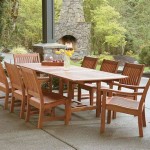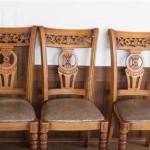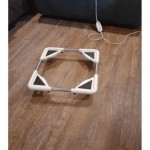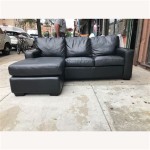How to Protect Outdoor Furniture
It takes a little effort to maintain the beauty of your outdoor furniture, especially when exposed to the elements all year round. If you don't provide the right protection, your cushions, upholstery, and furniture frames can quickly deteriorate. Knowing how to protect them appropriately can save you money, time, and stress in the long run.
Materials for Furniture Protection
Cushions
Cushions are the most vulnerable part of any outdoor furniture set. They're exposed to dirt, moisture, and UV rays, which can cause them to rot, mildew, and fade. If you want to protect your cushions, consider the following:
- Cushion Covers: Opt for waterproof, UV-resistant cushion covers. Choose materials like Sunbrella or acrylic, which can withstand the elements.
- Storage: When not in use, store your cushions in a dry, protected area. Use a storage bag or box specifically designed for outdoor cushions.
Upholstery
Upholstered outdoor furniture needs special care to prevent fading, staining, and water damage. To protect your upholstery:
- Fabric Protectors: Apply a fabric protector to the upholstery to repel liquids and stains. Reapply the protector every few months for optimal protection.
- Covers: Use tailored furniture covers made from waterproof and UV-resistant materials to cover the furniture when not in use.
Furniture Frames
Protecting the frames of your outdoor furniture is crucial to extend their lifespan. Consider these measures:
- Galvanized Steel or Aluminum: Choose furniture frames made of galvanized steel or aluminum, which are resistant to rust and corrosion.
- Wrought Iron: If you opt for wrought iron frames, apply a protective coating of paint or sealant to prevent rust. Teak or Cedar: Teak and cedar are naturally weather-resistant and can withstand outdoor conditions without additional protection.
Seasonal Protection
Depending on the weather conditions in your area, you may need to take additional steps to protect your outdoor furniture during different seasons:
Winter
- Store Furniture: If possible, store your furniture indoors during the winter months to protect it from freezing temperatures, snow, and ice.
- Covers: If you cannot store the furniture, use heavy-duty waterproof covers to protect it from the elements.
Summer
- Sun Damage: Protect your furniture from UV rays by using umbrellas, shade sails, or awnings. Choose furniture made from fade-resistant materials.
- Moisture Protection: Keep your furniture dry by covering it when not in use. Regularly check for signs of moisture or mildew.
Regular Maintenance
Regular maintenance is essential for keeping your outdoor furniture in top condition:
- Cleaning: Clean your furniture regularly to remove dirt, debris, and spills. Use a mild soap solution and a soft cloth.
- Inspections: Regularly inspect your furniture for any signs of damage, such as loose screws, tears, or stains. Repair any issues promptly.
Conclusion
Protecting your outdoor furniture requires a combination of the right materials, seasonal care, and regular maintenance. By following these tips, you can extend the lifespan of your furniture while maintaining its beauty and comfort.

How To Protect Your Outdoor Furniture Living Spaces

How To Protect Patio Furniture In The Fall And Winter Forbes Vetted

How To Protect Your Outdoor Furniture Living Spaces

How To Protect Outdoor Wood Furniture Osmo

How To Protect Your Outdoor Furniture Living Spaces

How To Protect Patio Furniture From Rain

How To Protect And Care For Outdoor Wood Furniture Timber Table

10 Tips On How To Protect Outdoor Furniture The Family Handyman

How To Protect Outdoor Furniture Cushions Fig Leaf
How To Protect Your Outdoor Furniture 5 Easy Protective Tips Fair
See Also








